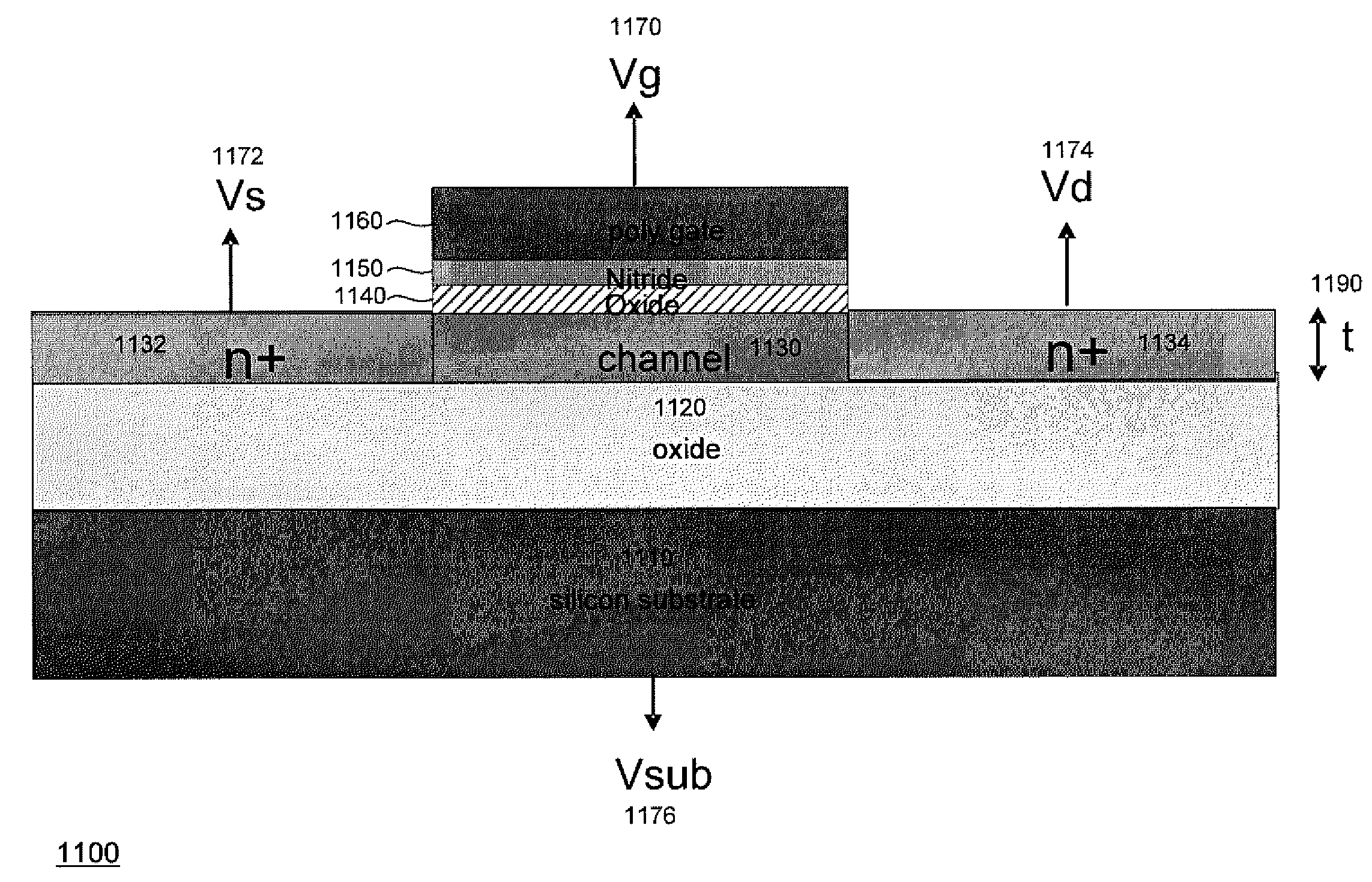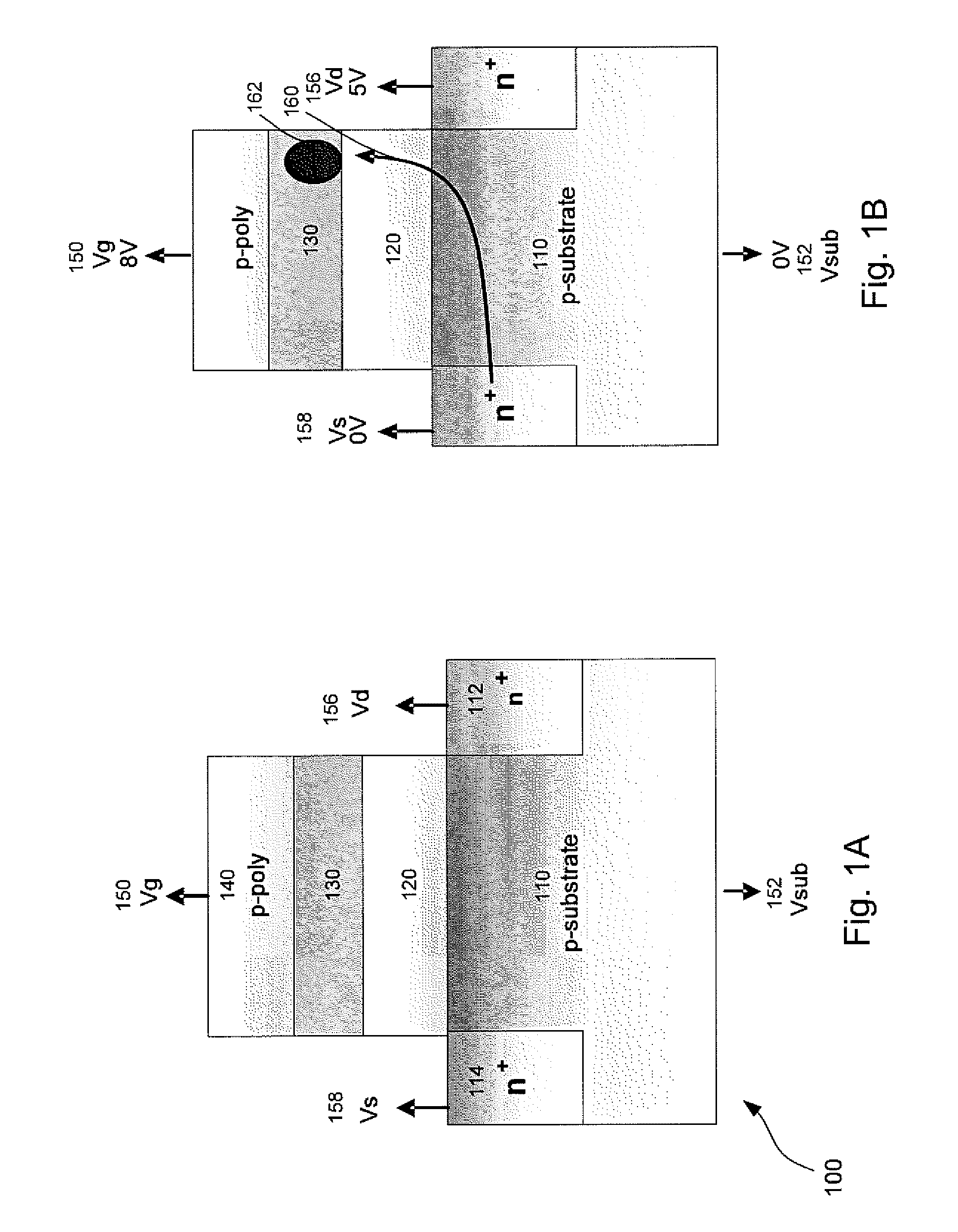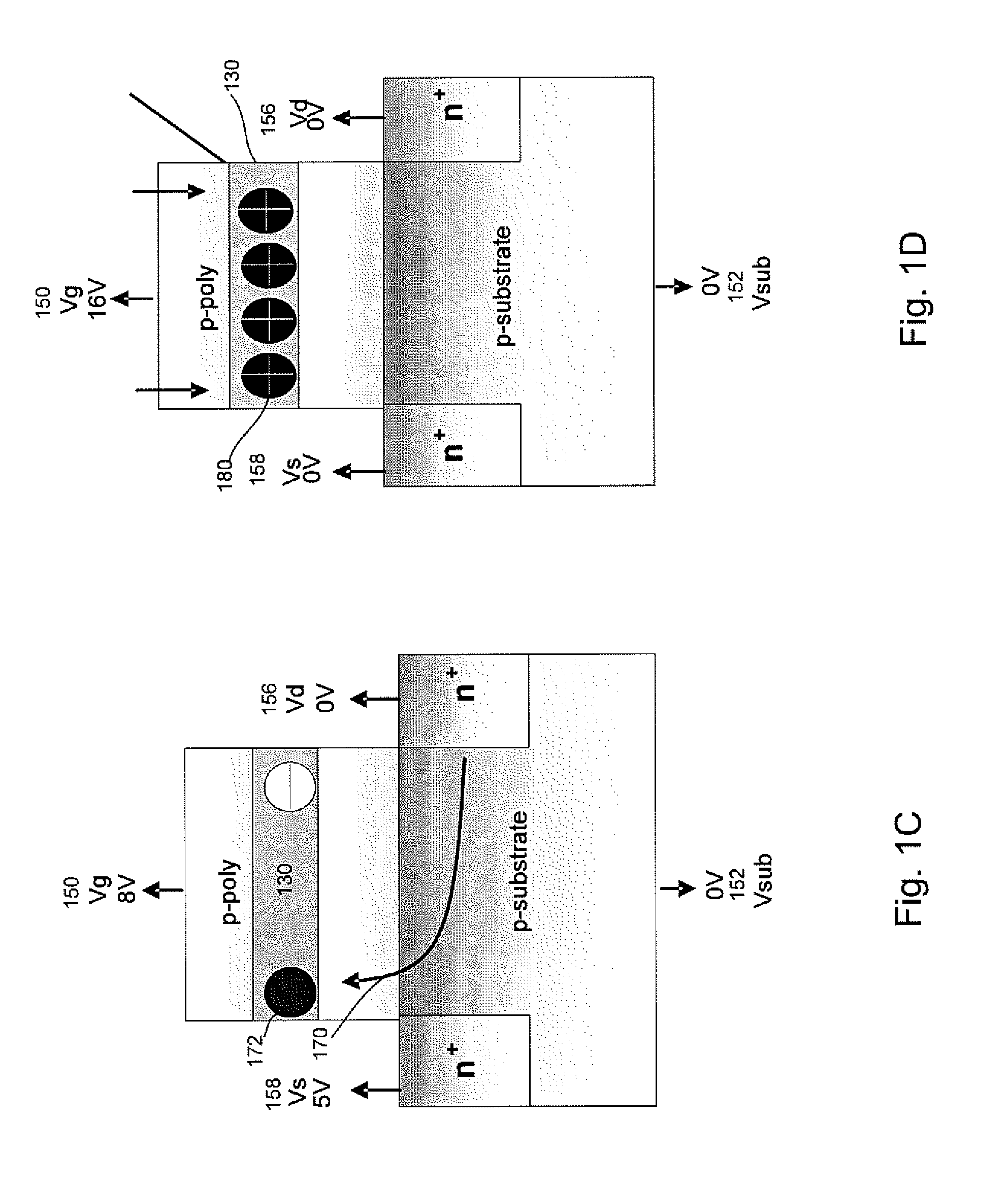Memory Structures for Expanding a Second Bit Operation Window
a memory operation and second bit technology, applied in the field of memory operation windows, can solve the problems of large vt distribution of erase state, difficult to erase, and charge loss in the high threshold cell and charge gain in the low threshold cell, and achieve the effect of increasing the memory operation window and reducing the second bit
- Summary
- Abstract
- Description
- Claims
- Application Information
AI Technical Summary
Benefits of technology
Problems solved by technology
Method used
Image
Examples
first embodiment
[0063]Turning now to FIG. 2, there is shown a structural diagram illustrating an erase method by employing a hole tunneling erase of the SONOS memory 200 to a negative voltage threshold by applying a positive gate voltage from a gate terminal of the SONOS memory 200. The SONOS memory 200 comprises a charge trapping structure 212 overlaying a first dielectric layer 210, and a second dielectric layer 214 overlaying the charge trapping structure 212. An n-poly layer 220 overlies the second dielectric layer 214. A high bias voltage applied at a gate terminal causes a band distortion so that the second dielectric layer 214 may be thinner at certain regions to allow holes to penetrate through the second dielectric layer 214. When a high bias voltage is applied to a gate terminal in the n-poly 220, holes are injected from the gate terminal (as indicated by arrows 240a, 240b), through the second dielectric layer 214, and to the charge trapping structure 212. The second dielectric layer 214 ...
second embodiment
[0064]In FIG. 3, there is shown a structural diagram illustrating the erase method by applying a hole tunneling erase to a SONOS memory cell 300 to bring the memory cell to a negative voltage threshold by applying a negative gate voltage from a substrate of a SONOS memory cell 300. The SONOS memory cell 300 comprises a charge trapping structure 312 overlaying a first dielectric layer 310, and a second dielectric layer 314 overlaying the charge trapping structure 312. An n-poly layer 320 overlies the second dielectric layer 314. A high negative bias voltage applied at a substrate 302 causes a band distortion so that the first dielectric layer 310 may be thinner at certain regions to allow holes to penetrate through first dielectric layer 310. When a high negative bias voltage is applied to the substrate 302, holes are injected from the substrate 302 (as indicated by arrows 340a, 340b), through the first dielectric layer 310, and to the charge trapping structure 312. The first dielect...
third embodiment
[0065]FIGS. 4A-4B are structural diagrams illustrating the erase method by employing a band-to-band hot hole erase to a negative voltage threshold in the SONOS memory cell 300. The erase operation of a right bit in the SONOS memory cell 300 is illustrated in FIG. 4A and the erase operation of a left bit in the SONOS memory cell 300 is illustrated in FIG. 4B. When erasing a right bit using a band-to-band hot hole erase, a drain voltage Vd 434 is applied with 5 volts and a source voltage Vs 436 is applied with 0 volts in order to move holes toward the right side of a charge trapping structure 410, as indicated by an arrow 420. The bias voltage conditions are reversed in erasing a left bit. When erasing a left bit using a band-to-band hot hole erase, the source voltage Vs 436 is applied with 5 volts and the drain voltage Vd 434 is applied with 0 volts, as indicated by an arrow 422. In both erase operations of the right bit and the left bit, a gate voltage Vg 430 is applied with 8 volts...
PUM
 Login to View More
Login to View More Abstract
Description
Claims
Application Information
 Login to View More
Login to View More - R&D
- Intellectual Property
- Life Sciences
- Materials
- Tech Scout
- Unparalleled Data Quality
- Higher Quality Content
- 60% Fewer Hallucinations
Browse by: Latest US Patents, China's latest patents, Technical Efficacy Thesaurus, Application Domain, Technology Topic, Popular Technical Reports.
© 2025 PatSnap. All rights reserved.Legal|Privacy policy|Modern Slavery Act Transparency Statement|Sitemap|About US| Contact US: help@patsnap.com



